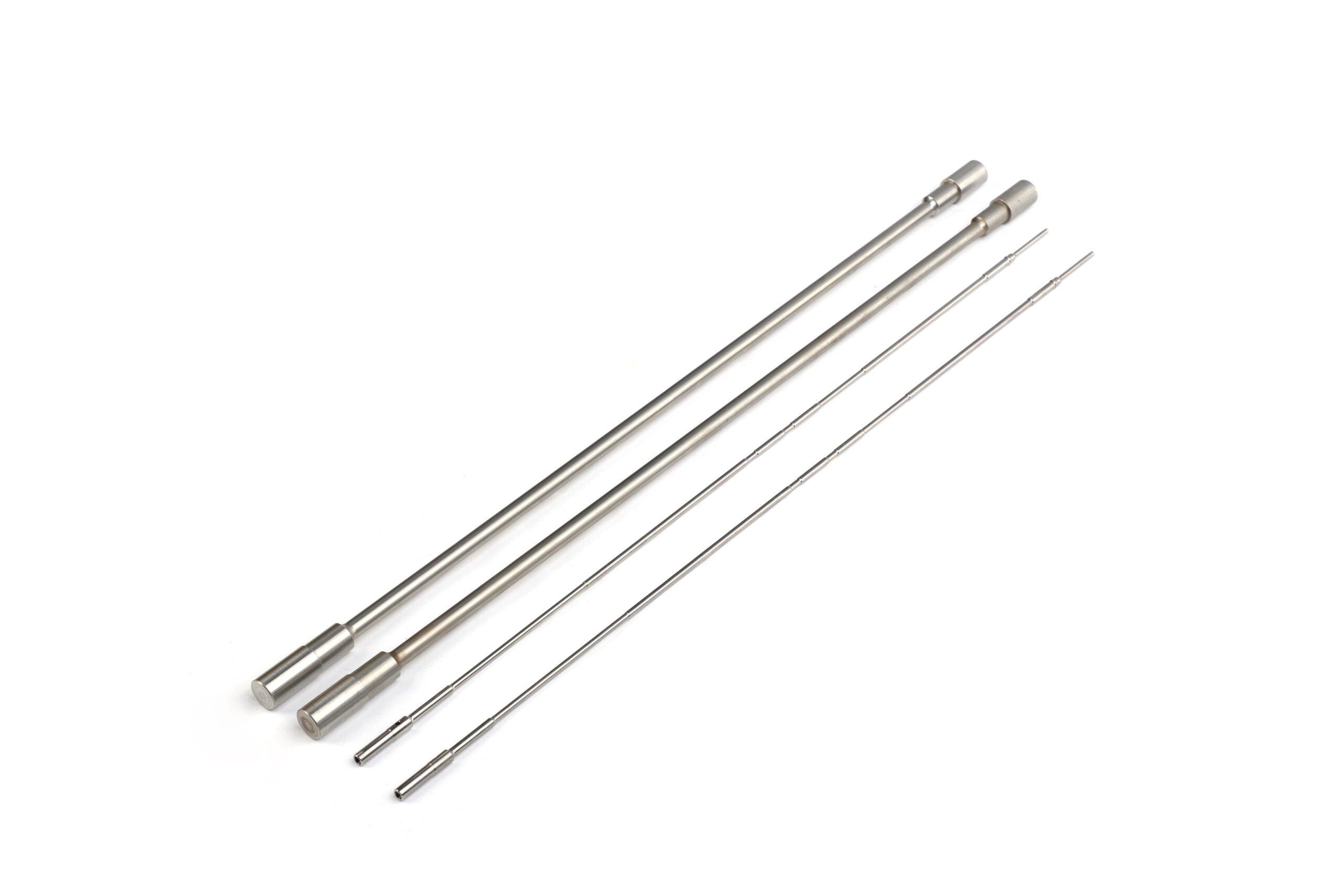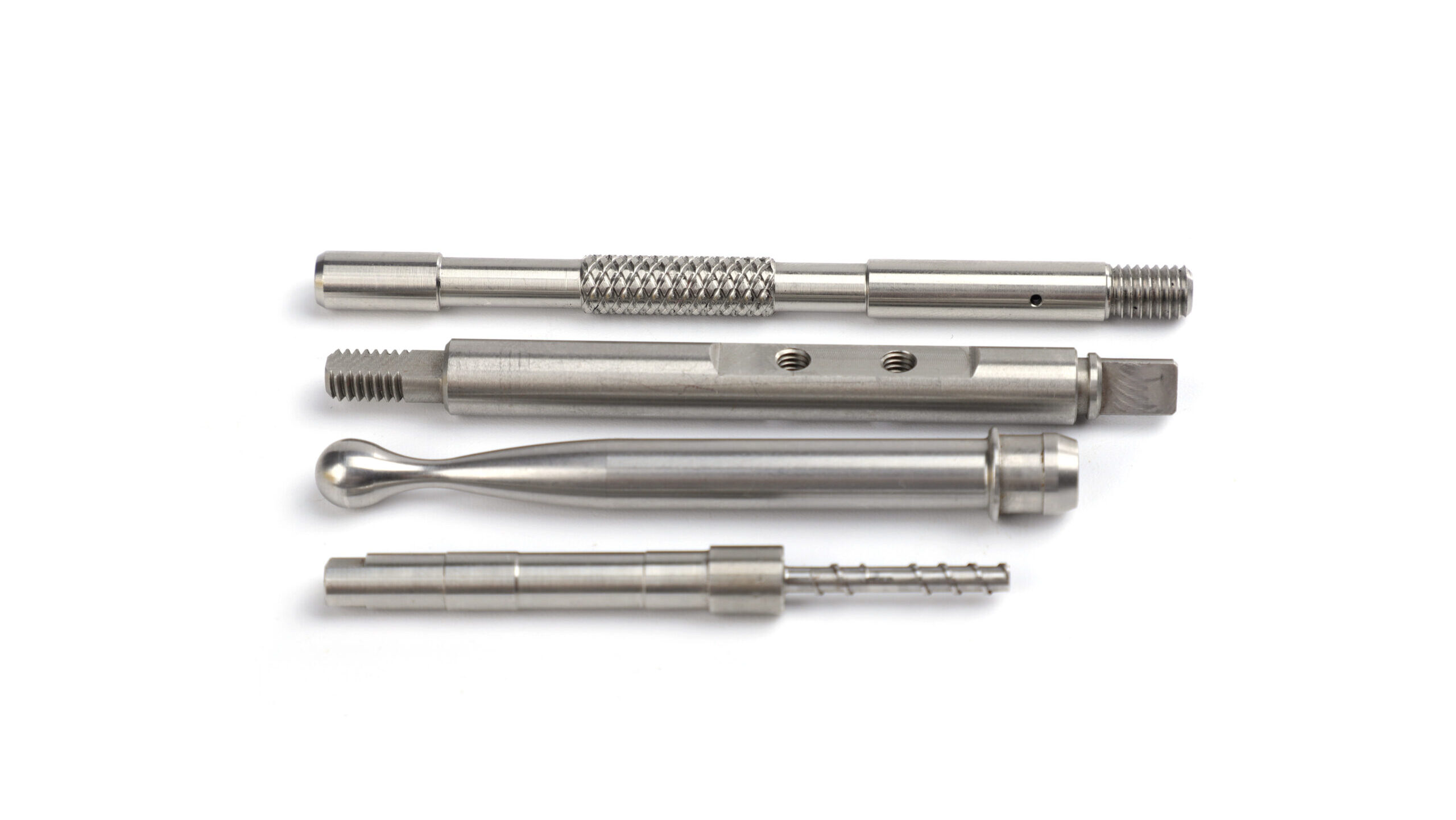Why does the Swiss-type CNC lathe have more advantages in machining long shafts?
The Swiss-type CNC lathe (hereinafter referred to as the “Swiss machine”) solves the pain points of traditional CNC lathes in problems such as large length-to-diameter ratio, poor rigidity, and easy deformation with its unique structural design and technological characteristics.
The Swiss machine adopts a spindle box moving structure. The workpiece is clamped by the spindle and moves axially along with the spindle, while the tool remains stationary. This design ensures that the cutting force always acts on the root of the workpiece with the strongest rigidity (near the clamping part). In contrast, the tool movement method of traditional lathes causes the cantilever part of the slender shaft to be unevenly stressed, resulting in chatter and deformation. The Swiss machine uses a reverse cutting path (feeding from the tail to the head of the workpiece) to counteract the bending deformation caused by the cutting force. At the same time, the rigidity of the contact point between the tool and the workpiece is always at its best. Due to the unidirectional cutting of the tool in traditional lathes, the cantilevered section at the tail of the slender shaft is prone to produce “bamboo joint-like” ripples.

The Swiss machine supports the front end of the bar stock with a center guide sleeve (the guide sleeve rotates synchronously to reduce wear), reducing the material deformation by more than 60% during cutting. Traditional lathes lack a guide sleeve structure, and slender shafts are prone to the “drooping head” phenomenon under high-speed cutting, which affects the coaxiality.
Complete multi-process machining in one clamping. The Swiss machine is equipped with multi-station fixed tools and power tools, enabling operations such as turning the outer circle, drilling holes, milling grooves, and tapping threads to be completed in one clamping. For example, when machining a slender shaft with a keyway, a traditional lathe needs to switch to a milling machine for secondary clamping. However, the Swiss machine achieves continuous machining through the linkage of the tool turret, increasing efficiency by more than 40%.

